What are the possible Biological and Non-biological forms of life
In the search for extraterrestrial intelligence, scientists often get accusations of "carbon chauvinism" because they expect that other life forms in the universe will consist of the same biochemical building blocks that we are, appropriately building our search. But life may well be different - and people think about it - so let's study ten possible biological and non-biological systems that expand the definition of "life."
Methanogens
In 2005, Heather Smith of the International Space University in Strasbourg and Chris McKay from the Ames Research Center at NASA prepared a paper examining the possibility of life on methane, the so-called methanogens. Such life forms could consume hydrogen, acetylene and ethane, exhaling methane instead of carbon dioxide.
This could make possible habitation zones of life in cold worlds like the moon of Saturn Titan. Like Earth, Titan's atmosphere is mostly nitrogen, but mixed with methane. Titan is also the only place in our solar system, except the Earth, where there are large liquid water bodies - lakes and rivers from the ethane-methane mixture. (Underground reservoirs are also present on Titan, his sister moon Enceladus, and also on the satellite of Jupiter Europe). The liquid is considered necessary for the molecular interactions of organic life and, of course, the focus will be on water, but ethane and methane also allow such interactions to take place.
The mission of NASA and ESA "Cassini Huygens" in 2004 saw a dirty world with a temperature of -179 degrees Celsius, where the water was hard as a stone, and methane floated along river valleys and basins into polar lakes. In 2015, a team of chemical engineers and astronomers at Cornell University developed a theoretical cell membrane from small organic nitrogen compounds that could function in Titan's liquid methane. They called their theoretical cell "nitrogenous", which literally means "nitrogen body," and it had the same stability and flexibility as the terrestrial liposome. The most interesting molecular compound was acrylonitrile azotosome. Acrylonitrile, a colorless and poisonous organic molecule, is used for acrylic paints, rubber and thermoplastics on Earth; Also it was found in the atmosphere of Titan.
The consequences of these experiments for the search for extraterrestrial life can not be overestimated. Life not only could potentially develop on Titan, but it can also be found on hydrogen, acetylene and ethane traces on the surface. Planets and moons, in which atmospheres methane prevails, can be not only around the stars like the Sun, but also around red dwarfs in the wider "Goldilocks" zone. If NASA launches the Titan Mare Explorer in 2016, as early as 2023 we will receive detailed information about possible life on nitrogen.
Life based on silicon
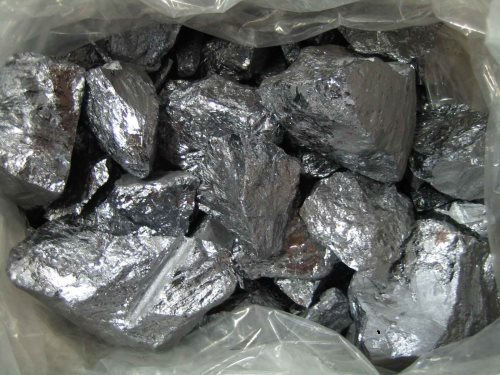
Life based on silicon - this is perhaps the most common form of alternative biochemistry, a favorite popular science and science fiction - remember the Horta from Star Trek. This idea is far from new, its roots go back to the reflections of Herbert Wells in 1894: "What fantastic imagination could be played out from such an assumption: will we imagine silicon-aluminum organisms - or maybe silicon-aluminum people at once?" - which travel through the atmosphere from gaseous sulfur, let's put it this way, over the seas of liquid iron at a temperature of several thousand degrees or something, just above the temperature of the blast furnace. "
Silicon remains popular precisely because it is very similar to carbon and can form four bonds, like carbon, which opens the possibility of creating a biochemical system completely dependent on silicon. This is the most common element in the earth's crust, except for oxygen. On Earth, there are algae, which include silicon in its growth process. Silicon plays the second role after carbon because it can form more stable and diverse complex structures necessary for life. Carbon molecules include oxygen and nitrogen, which form incredibly strong bonds. Complex molecules based on silicon, unfortunately, tend to disintegrate. In addition, carbon is extremely common in the universe and there are billions of years.
It is unlikely that silicon-based life will appear in an environment similar to that of the earth, since most of the free silicon will be trapped in volcanic and magmatic rocks of silicate materials. It is assumed that in a high-temperature environment everything can be different, but no evidence has been found. An extreme world like Titan could support life on the basis of silicon, possibly together with methanogens, since silicon molecules like silanes and polysilanes can mimic the organic chemistry of the Earth. Nevertheless, carbon predominates on the surface of Titan, while most of the silicon is deep below the surface.
NASA astrophysicist Max Bernstein suggested that a silicon-based life could exist on a very hot planet, with an atmosphere rich in hydrogen and poor oxygen, allowing complex silane chemistry with reverse silicon bonds to occur with selenium or tellurium, but this, in Bernstein's opinion, is unlikely. On Earth, such organisms would multiply very slowly, and our biochemistry would not interfere in any way. They, however, could slowly eat our cities, but "they could use a jackhammer."
Other biochemical options
In principle, there have been quite a few proposals regarding life systems based on something other than carbon. Like carbon and silicon, boron also tends to form strong covalent molecular compounds, forming various structural variants of hydride, in which boron atoms are connected by hydrogen bridges. Like carbon, boron can bind to nitrogen, forming compounds, by chemical and physical properties like alkanes, the simplest organic compounds. The main problem with living on the basis of boron is due to the fact that this is a rather rare element. Life on the basis of boron will be most suitable in an environment whose temperature is low enough for liquid ammonia, then chemical reactions will proceed more controllably.
Another possible form of life, which attracted some attention, is arsenic-based life. All life on Earth consists of carbon, hydrogen, oxygen, phosphorus and sulfur, but in 2010 NASA announced that it found a bacterium GFAJ-1, which could include arsenic instead of phosphorus in the cell structure without any consequences for itself. GFAJ-1 lives in the rich arsenic waters of Lake Mono in California. Arsenic is toxic to any living creature on the planet, except for a few microorganisms that normally carry it or breathe it. GFAJ-1 was the first case of inclusion of this element by the body as a biological building block. Independent experts slightly diluted this statement when they found no evidence of the inclusion of arsenic in DNA or at least some arsenates. Nevertheless, interest in possible arsenic-based biochemistry arose.
As a possible alternative to water for the construction of life forms, ammonia was also put forward. Scientists have suggested the existence of biochemistry based on nitrogen-hydrogen compounds, which use ammonia as a solvent; it could be used to create proteins, nucleic acids and polypeptides. Any life forms based on ammonia should exist at low temperatures, at which ammonia takes on a liquid form. Solid ammonia is denser than liquid ammonia, so there is no way to stop its freezing on cooling. For unicellular organisms, this would not be a problem, but would cause chaos for multicellular organisms. Nevertheless, there is the possibility of the existence of unicellular ammonia organisms on the cold planets of the solar system, and also on gas giants like Jupiter.
Sulfur is believed to have served as the basis for the onset of metabolism on Earth, and known organisms whose metabolism includes sulfur instead of oxygen exist under extreme conditions on Earth. Perhaps in another world, life forms based on sulfur could have an evolutionary advantage. Some believe that nitrogen and phosphorus could also take the place of carbon under quite specific conditions.
Memetic Life
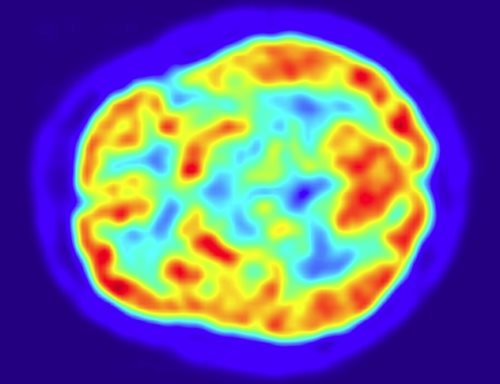
Richard Dawkins believes that the basic principle of life is: "All life develops, thanks to the survival mechanisms of reproduced beings." Life should be able to reproduce (with some assumptions) and stay in an environment where natural selection and evolution will be possible. In his book The Selfish Gene, Dawkins noted that concepts and ideas are developed in the brain and spread among people in the process of communication. In many respects it resembles the behavior and adaptation of genes, so he calls them "memes." Some compare songs, jokes and rituals of human society with the first stages of organic life - free radicals floating in the ancient seas of the Earth. The creations of the mind are reproduced, evolve and are struggling to survive in the realm of ideas.
Such memes existed before humanity, in the social calls of birds and the learned behavior of primates. When humanity became able to think abstractly, memes developed further, managing tribal relations and forming the basis for the first traditions, culture and religion. The invention of the letter further encouraged the development of memes, as they were able to spread in space and time, transmitting memetic information just as genes transmit biological information. For some, this is a pure analogy, but others believe that memes represent a unique, although slightly rudimentary and limited form of life.
Some went even further. George Van Dream developed the theory of "symbiosis", which implies that languages are in themselves forms of life. Old linguistic theories considered language a kind of parasite, but van Dream believes that we live in cooperation with the memetic entities that inhabit our brain. We live in symbiotic relations with language organisms: without us they can not exist, and without them we are no different from monkeys. He believes that the illusion of consciousness and free will resulted from the interaction of animal instincts, hunger and lust of the human carrier and linguistic symbiont, reproduced with the help of ideas and meanings.
Synthetic life based on XNA
Life on Earth is based on two information-transfer molecules, DNA and RNA, and for a long time scientists have been wondering whether it is possible to create other similar molecules. Although any polymer can store information, RNA and DNA display the heredity, coding and transfer of genetic information and are able to adapt over time in the evolution process. DNA and RNA are chains of nucleotide molecules consisting of three chemical components - phosphate, a five-carbon sugar group (deoxyribose in DNA or ribose in RNA) and one of five standard bases (adenine, guanine, cytosine, thymine or uracil).
In 2012, a team of scientists from England, Belgium and Denmark was the first in the world to develop xenonucleic acid (KNA, XNA), synthetic nucleotides that functionally and structurally resemble DNA and RNA. They were developed by replacing the sugar groups of deoxyribose and ribose with various substitutes. Such molecules have been done before, but for the first time in history they have been able to reproduce and evolve. In DNA and RNA, replication occurs through polymerase molecules that can read, transcribe, and reverse transcribe normal nucleic acid sequences. The group developed synthetic polymerases that created six new genetic systems: HNA, CeNA, LNA, ANA, FANA and TNA.
One of the new genetic systems, HNA, or hexitonucleic acid, was sufficiently robust to store the right amount of genetic information that could serve as the basis for biological systems. Another, threosonucleic acid, or TNA, was a potential candidate for the mysterious primary biochemistry that reigned at the dawn of life.
There are a lot of potential applications of these achievements. Further research can help in developing better models for the emergence of life on Earth and will have consequences for biological fabrications. XNA can be used therapeutically, since it is possible to create nucleic acids for treatment and communication with specific molecular targets that will not deteriorate as rapidly as DNA or RNA. They can even lie at the base of molecular machines or in general an artificial life form.
But before this becomes possible, other enzymes compatible with one of the XNA should be developed. Some of them have already been developed in the UK at the end of 2014. There is also the possibility that XNA can harm RNA / DNA-organisms, so safety should come first.
Chromodynamics, weak nuclear interaction and gravitational life
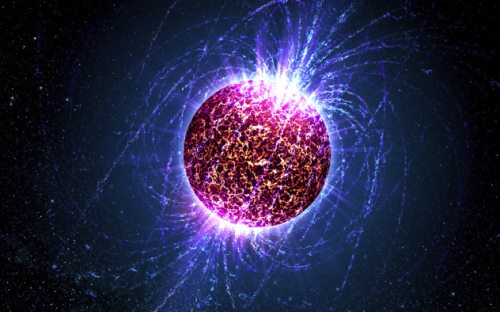
In 1979, scientist and nanotechnologist Robert Freitas Jr. suggested a possible non-biological life. He said that the possible metabolism of living systems is based on four fundamental forces - electromagnetism, strong nuclear interaction (or quantum chromodynamics), weak nuclear interaction and gravity. Electromagnetic life is the standard biological life that we have on Earth.
Chromodynamic life could be based on a strong nuclear interaction, which is considered the strongest of the fundamental forces, but only at extremely short distances. Freitas suggested that such a medium could be possible on a neutron star, a heavy rotating object 10-20 kilometers in diameter with a star mass. With an incredible density, a powerful magnetic field and gravity 100 billion times stronger than on Earth, such a star would have a core with a 3-kilometer crust of crystalline iron. Underneath it would be a sea with incredibly hot neutrons, various nuclear particles, protons and nuclei of atoms and possible "macronucleus" rich in neutrons. These macronuclei in theory could form large supernova, similar to organic molecules, neutrons would act as the equivalent of water in a quaint pseudobiological system.
Freitas saw forms of life on the basis of weak nuclear interaction as unlikely, since weak forces operate only in the subnuclear range and are not particularly strong. As beta-radioactive decay and the free decay of neutrons often show, the forms of life of weak interactions could exist with close monitoring of weak interactions in their environment. Freitas introduced beings consisting of atoms with excess neutrons, which become radioactive when they die. He also suggested that there are regions of the universe where the weak nuclear force is stronger, and, therefore, the chances for such a life are higher.
Gravity beings can also exist, since gravity is the most common and effective fundamental force in the universe. Such beings could receive energy from gravity itself, receiving unlimited power from collisions of black holes, galaxies, other celestial objects; smaller creatures - from the rotation of planets; the smallest - from the energy of waterfalls, wind, tides and ocean currents, possibly earthquakes.
Forms of life from dust and plasma
Organic life on Earth is based on molecules with carbon compounds, and we have already figured out possible compounds for alternative forms. But in 2007 an international team of scientists headed by VN Tsytovich from the Institute of General Physics of the Russian Academy of Sciences documented that under the right conditions, particles of inorganic dust can be assembled into spiral structures that will then interact with each other in the manner inherent in organic chemistry. This behavior is also born in the state of plasma, the fourth state of matter after solid, liquid and gaseous, when electrons break away from atoms leaving a mass of charged particles.
Tsytovich's group discovered that when electronic charges separate and the plasma polarizes, the particles in the plasma self-organize into the form of spiral structures like a spin, electrically charged, and attracted to each other. They can also share, forming copies of the original structures, like DNA, and induce charges in their neighbors. According to Tsytovich, "these complex, self-organizing plasma structures meet all the necessary requirements to be considered as candidates for inorganic living matter. They are autonomous, they are reproduced and they are evolving. "
Some skeptics believe that such statements are more an attempt to attract attention than by serious scientific statements. Although spiral structures in plasma may resemble DNA, similarity in shape does not necessarily imply a similarity in functions. Moreover, the fact that spirals are reproduced does not mean the potential of life; clouds do that too. What is even more depressing, most of the research was done on computer models.
One of the participants in the experiment also wrote that although the results did indeed resemble life, after all, they were "just a special form of a plasma crystal." And yet, if inorganic particles in a plasma can develop into self-replicating, evolving life forms, they can be the most common form of life in the universe, thanks to the ubiquitous plasma and interstellar dust clouds all over the cosmos.
Inorganic chemical cells
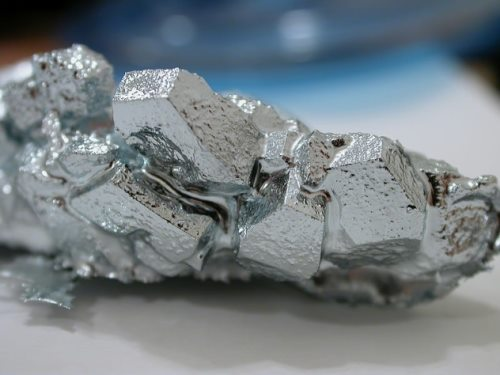
Professor Lee Cronin, a chemist at the College of Science and Engineering at the University of Glasgow, dreams of creating living cells from metal. He uses polyoxometallates, a series of metal atoms associated with oxygen and phosphorus to create bubble-like cells, which he calls "inorganic chemical cells," or iCHELLs (this acronym can be translated as "neohlethy").
The Cronin group began with the creation of salts from negatively charged ions of large metal oxides associated with a small positively charged ion such as hydrogen or sodium. A solution of these salts is then injected into another saline solution, full of large positively charged organic ions, associated with small negatively charged ones. Two salts meet and exchange parts, so that large metal oxides become partners with large organic ions, forming something like a bubble that is impenetrable to water. By changing the backbone of the metal oxide, it can be achieved that the bubbles will acquire the properties of biological cell membranes that selectively pass and release chemicals from the cell, which potentially can allow the same type of controlled chemical reactions to occur in living cells.
A group of scientists also made bubbles in bubbles, imitating the internal structures of biological cells, and made progress in creating an artificial form of photosynthesis that could potentially be used to create artificial plant cells. Other synthetic biologists note that such cells can never become alive until they have a system of replication and evolution like DNA. Kronin does not lose hope that further development will bear fruit. Among the possible applications of this technology is also the development of materials for solar fuel devices and, of course, medicine.
According to Cronin, "the main goal is to create complex chemical cells with living properties that can help us understand the development of life and follow the same path to introduce new technologies on the basis of evolution into the material world - a kind of inorganic living technologies."
Von Neumann probes
Artificial life on the basis of machines is a fairly common idea, almost banal, so let's just consider the von Neumann probes so as not to bypass it. For the first time they were invented in the mid-20th century by the Hungarian mathematician and futurist John von Neumann, who believed that in order to reproduce the functions of the human brain, the machine must have mechanisms of self-management and self-healing. So he came to the idea of creating self-reproducing machines, based on observations of the increasing complexity of life in the process of reproduction. He believed that such machines could become a kind of universal designer that could allow not only to create complete replicas of himself, but also to improve or change versions, thereby realizing evolution and increasing complexity over time.
Other futurists like Freeman Dyson and Eric Drexler quickly applied these ideas to the field of space research and created a von Neumann probe. Sending a self-replicating robot into space can be the most effective way of colonizing the galaxy, because it's possible to capture the entire Milky Way in less than one million years, even if it's limited to the speed of light.
The Gaia hypothesis
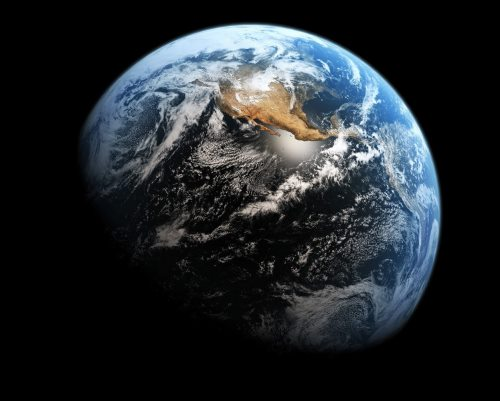
In 1975, James Lovelock and Sidney Upton co-wrote an article for New Scientist titled "In Search of Gaia." Adhering to the traditional point of view that life originated on Earth and flourished due to the necessary material conditions, Lovelock and Upton assumed that life thus took on an active role in maintaining and determining the conditions for its survival. They suggested that all living matter on Earth, in the air, oceans and on the surface is part of a single system behaving like a superorganism that is able to adjust the temperature on the surface and composition of the atmosphere in a way that is necessary for survival. They called this system Gaia, in honor of the Greek goddess of the earth. It exists to maintain homeostasis, through which the biosphere can exist on earth.
Lovelock worked on the Gaia hypothesis from the mid-1960s. The basic idea is that the Earth's biosphere has a number of natural cycles, and when one goes awry, others compensate it so as to maintain the vital capacity. This could explain why the atmosphere does not consist entirely of carbon dioxide or why the seas are not too salty. Although volcanic eruptions made an early atmosphere consisting predominantly of carbon dioxide, there were nitrogen-producing bacteria and plants producing oxygen in the process of photosynthesis. After millions of years, the atmosphere has changed in our favor. Although the rivers carry salt to the oceans from rocks, the salinity of the oceans remains stable by 3.4%, as the salt seeps through the cracks in the ocean floor. These are not conscious processes, but the result of feedback, which keeps the planets in a habitable equilibrium.
Other evidence includes the fact that if it were not for biotic activity, methane and hydrogen would disappear from the atmosphere in just a few decades. In addition, despite an increase in the solar temperature by 30% over the last 3.5 billion years, the average global temperature has been shaken by only 5 degrees Celsius, thanks to a regulatory mechanism that removes carbon dioxide from the atmosphere and locks it in fossilized organic matter.
Initially, Lovelock's ideas were met with ridicule and accusations. Over time, however, the Gaia hypothesis influenced ideas about the Earth's biosphere, helped shape their entire perception in the scientific world. Today Gaea's hypothesis is rather respected than accepted by scientists. It is rather a positive cultural framework in which scientific research is to be conducted on the theme of the Earth as a global ecosystem.
Paleontologist Peter Ward developed Medea's competitive hypothesis, named after the mother who killed her children, in Greek mythology, whose main idea boils down to the fact that life in its essence tends to self-destruction and suicide. He points out that historically most of the mass extinctions were caused by life forms, for example, by microorganisms or hominids in pants that cause severe injuries to the Earth's atmosphere.

References for Text and Images:
- http://www.sci-news.com/space/science-azotosome-oxygen-free-methane-based-life-forms-titan-02549.html
- https://www.theguardian.com/science/2017/jan/23/organisms-created-with-synthetic-dna-pave-way-for-new-entirely-new-life-forms
- http://blogs.discovermagazine.com/notrocketscience/2012/04/19/synthetic-xna-molecules-can-evolve-and-store-genetic-information-just-like-dna/
- http://www.daviddarling.info/encyclopedia/S/siliconlife.html
- https://www.slideshare.net/mrwozney/the-gaia-hypothesis-the-earth-as-a-system
- https://futurism.com/von-neumann-probe/
- http://www.sciencedebate.com/science-blog/inorganic-chemical-cells-creating-life-without-carbon-bonds
- http://earth-chronicles.com/science/10-possible-alien-life-forms.html
Support @steemstem and the #steemstem
project - curating and supporting quality STEM
related content on Steemit

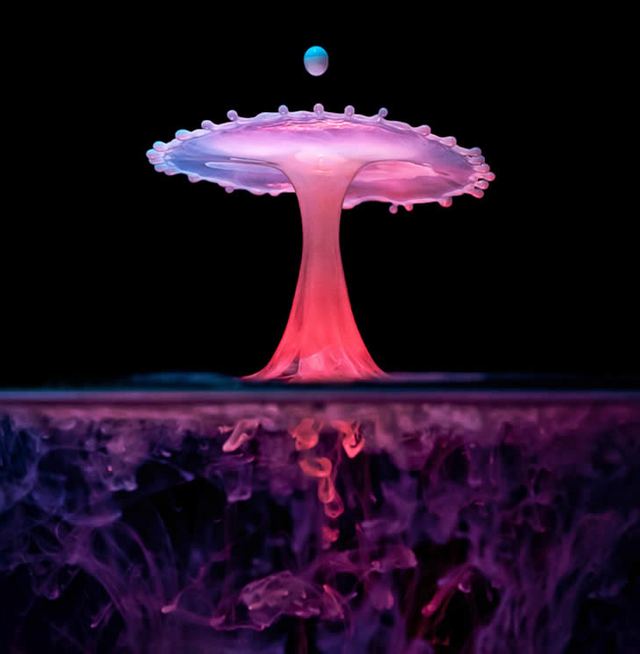
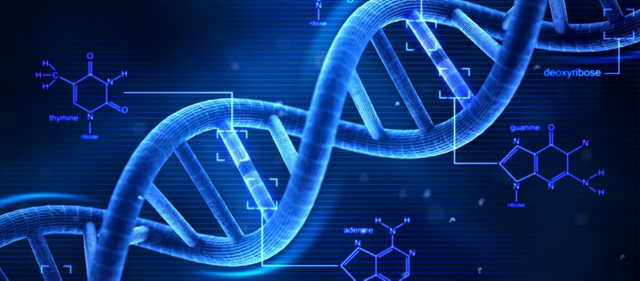
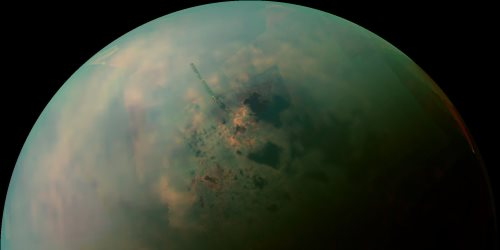
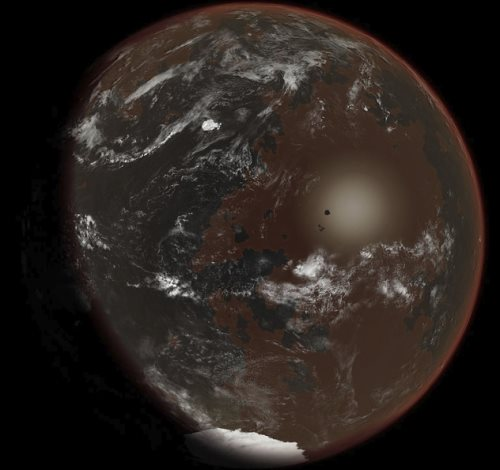
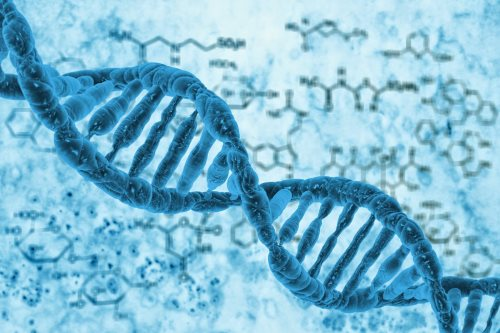

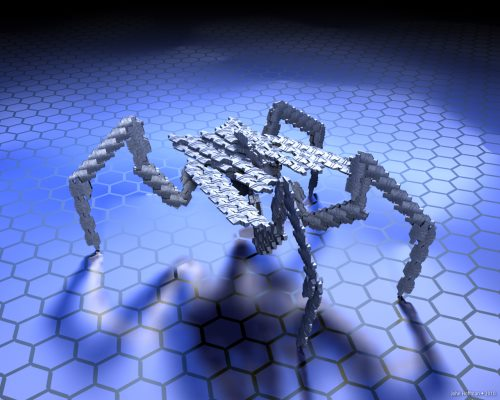
This article is plagiarized from here:
https://listverse.com/2015/07/17/10-hypothetical-forms-of-life/
Don't claim others work as your own.
Definitely scientists marvel at their hard work to explain all the mysteries of science ...
Excellent information, the unknown!
Unquestionably in the wonderful world of our Creator "EVERYTHING" may be possible.
Wow, this is mind-blowing. I remember when the report of arsenic based life came out, but I didn't know life could be based in all these different ways.
I think carbon is the best material, because its bounds are highly reversible and able to reconstruct easily. Maybe life based one more stable bounds is less affected by unwanted reactions that may lead to “cancer”. Also, one questions for me is, when do we define something as life? Are prions (infectious protein) already a life-form?